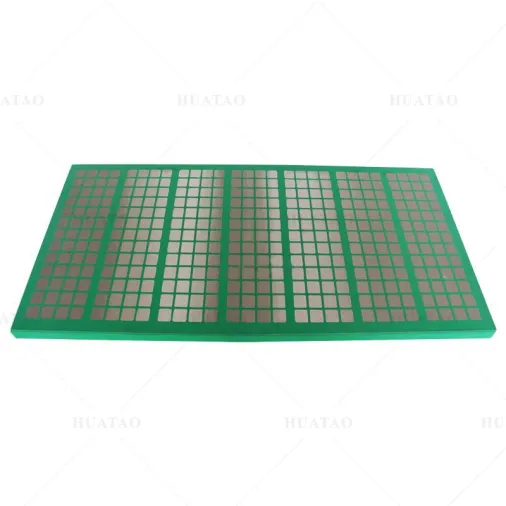Factors to Consider When Choosing Shale Shaker Screens
Benefits of Shale Shaker Screens
Shale shaker screens offer numerous benefits that significantly contribute to the efficiency of oilfield operations. Let's explore some of these advantages:
Efficient Solids Control
By separating and removing solids from drilling fluids, shale shaker screens prevent the accumulation of debris, which can negatively impact drilling performance. Efficient solids control helps maintain the desired properties of the drilling mud, leading to improved drilling efficiency and reduced downtime.
Improved Drilling Fluids Management
Shale shaker screens play a crucial role in managing drilling fluids. By removing solids, they help maintain the mud's viscosity, density, and chemical composition within the required specifications. This ensures stable drilling conditions, reduces waste, and minimizes environmental impact.
Extended Equipment Lifespan
Effective solids control provided by shale shaker screens protects downstream equipment, such as mud pumps and drilling rigs, from abrasive wear and damage caused by solids. By extending the lifespan of the equipment, operators can reduce maintenance costs and improve overall operational efficiency.
Enhanced Cost-effectiveness
Investing in high-quality shale shaker screens can result in significant cost savings in the long run. By optimizing solids control, reducing drilling fluid waste, and minimizing equipment wear, operators can achieve improved drilling performance, lower operational costs, and higher returns on investment.

Factors to Consider When Choosing Shale Shaker Screens
When selecting shale shaker screens, several factors should be taken into account to ensure the best fit for specific drilling operations. Let's examine some of these key considerations:
Mesh Size and API Number
Mesh size refers to the number of openings per linear inch on the screen. The appropriate mesh size and API number selection depend on the desired cut point and the characteristics of the drilling mud. A higher mesh number indicates smaller openings, suitable for fine particle separation, while a lower mesh number is more effective for larger solids removal.
Screen Configuration and Conductance
Screen configuration, including the number of layers and wire diameter, affects the screen's conductance and solids handling capacity. Optimal screen conductance ensures efficient fluid flow, reducing the risk of blockage and enhancing overall performance.
Screen Material and Durability
The choice of screen material is crucial for durability and performance. Factors such as chemical resistance, tensile strength, and wear resistance should be considered. Metal framed screens are known for their robustness, while Composite frame shale shaker screen offer excellent resistance to corrosion and abrasion.
Maintenance and Best Practices for Shale Shaker Screens
To maximize the lifespan and performance of shale shaker screens, proper maintenance and adherence to best practices are essential. Here are some key recommendations:
Regular Inspection and Cleaning
Regularly inspect the screens for signs of wear, tears, or clogging. Clean the screens to remove built-up solids and debris that can impair their performance. Proper cleaning and maintenance improve screen efficiency and prolong their lifespan.
Proper Handling and Storage
Handle shale shaker screens with care to prevent damage or deformation. Store them in a clean and dry environment to avoid contamination and preserve their integrity. Following proper handling and storage practices ensures that screens are ready for use when needed.
Replacing Worn-out Screens
Monitor the condition of shale shaker screens and promptly replace worn-out or damaged screens. Operating with compromised screens can lead to reduced solids control efficiency and potential damage to downstream equipment.
Shale Shaker Screen Innovations
Continuous innovation in shale shaker screen technology has led to the development of advanced features that further optimize solids control. Let's explore some notable innovations:
Advanced Screen Mesh Technology
The use of advanced screen mesh technology, such as composite materials and specialized weaves, enhances screen performance and durability. These innovations offer improved separation efficiency and extended screen life, contributing to enhanced drilling operations.
Dual-deck Shale Shaker Screens
Dual-deck shale shaker screens feature two layers of screens with different mesh sizes. This configuration allows for more precise solids control by sequentially removing larger and smaller particles. Dual-deck screens are effective in managing a wide range of drilling fluids and solid compositions.
Self-cleaning Shale Shaker Screens
Self-cleaning shale shaker screens incorporate design elements that facilitate the automatic removal of solids from the screen surface. These screens employ various mechanisms, such as mechanical scraping or fluid jets, to prevent the build-up of solids and maintain optimal screen performance.
Conclusion
Shale shaker screens are indispensable components in the solids control process within the oil and gas industry. Their role in separating and removing unwanted solids from drilling fluids ensures efficient and cost-effective oilfield operations. By choosing the right type of shale shaker screens, considering factors like mesh size, screen configuration, and material durability, operators can optimize drilling performance, prolong equipment lifespan, and reduce operational costs.
Related
223
0
0


Comments
All Comments (0)